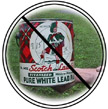FAQ: Lead Poisoning and Lead Law Compliance in the State of Massachusetts
Property owners, including homeowners and landlords, are responsible for lead law compliance around Fitchburg, MA, and throughout the rest of the state. By getting a lead hazard assessment from CAT Inspection Services, you are doing your part in protecting your property and the people who live in it.
Massachusetts has an extensive set of regulations in place to minimize the risk of lead poisoning. Everyone who owns a residential building must take the necessary steps to keep their properties safe. Below is a primer on lead poisoning and the state Lead Law.


The most common vehicle for lead poisoning is paint dust. Paint containing lead can chip and peel from surfaces as a result of impacts or even while performing repair or renovation work. Painted windows can also create dust as they open and close.
The lead dust can rest on surfaces that children touch, clinging to their hands and toys in the process. Children ingest the lead dust when they put their hands or toys into their mouths. It is also possible for a child to mouth lead-painted surfaces or eat lead paint chips. Lead-contaminated water and soil can also poison a child.
The most common way to screen for lead poisoning is through blood tests. Your doctor, health care provider, or local health clinic can provide tests. The state health department and lead poisoning prevention programs may also provide them. The Massachusetts Lead Law requires that all children between the ages of 9 months and 4 years be tested annually.
The Lead Law requires the deleading or interim control of lead hazards existing in homes built before 1978 where children under six live. Owners are responsible for complying with the Lead Law, which includes paying the costs to delead. The law applies to homeowners of single- and multi-family homes and also owners of rental properties.
There are two ways to comply with state Lead Law. The first is to correct all lead hazards. A licensed lead inspector must come to your property to identify hazards and record them. Then, you must correct all the hazards that they identified.
The second way is to only correct urgent lead hazards. This is a temporary method called Interim Control. You must first hire a licensed risk assessor who will show you what areas require Interim Control. After completing this option, you must conduct this process every two years.
Deleading is the process of removing lead from materials or surfaces. It means to remove or cover lead violations. This process is mostly used for walls that are covered with lead-based paint.
Not all surfaces require deleading. Generally speaking, surfaces that reach five feet are the only sections that require it—this is mostly to prevent children from “mouthing” them. Common surfaces to delead include, but are not limited to:
- Wall Corners
- Doors
- Stairs
- Railings
- Windows
- Baseboards
- Chair Rails
Yes. A property owner is legally responsible if a child is poisoned by lead hazards while living on their property and the owner has not complied with the Lead Law.
An owner cannot avoid liability by asking tenants to sign an agreement that they accept the presence of lead paint, nor can an owner refuse to rent to families with children under six years of age as a way to circumvent responsibilities. Doing so would be discrimination, which is illegal under the Lead Law and federal and state fair housing laws.
Simply put, complying with the Lead Law is the best protection an owner has from liability and a child has from lead poisoning.
When assessing your home for lead hazards, it is necessary to hire a licensed inspector. Request a consultation with CAT Inspections to begin the Lead Law compliance process.
